Key Takeaways
-
Identification: Centipedes have long bodies with many legs and move quickly; silverfish are smaller, silvery-grey, and move in a fish-like manner with three tail-like appendages.
-
Habitats: Centipedes prefer damp, dark areas like basements and gardens; silverfish thrive indoors in humid spots such as kitchens, bathrooms, and bookshelves.
-
Feeding Habits: Centipedes are predators that eat insects and spiders, offering pest control benefits. Silverfish feed on starches and sugars, damaging books, fabrics, and pantry goods.
-
Risks: Centipede bites can cause mild pain but are generally harmless; silverfish don’t bite but can damage valuable household items.
-
Prevention Strategies: Control humidity, seal cracks, declutter, and store materials in airtight containers to prevent infestations from both pests.
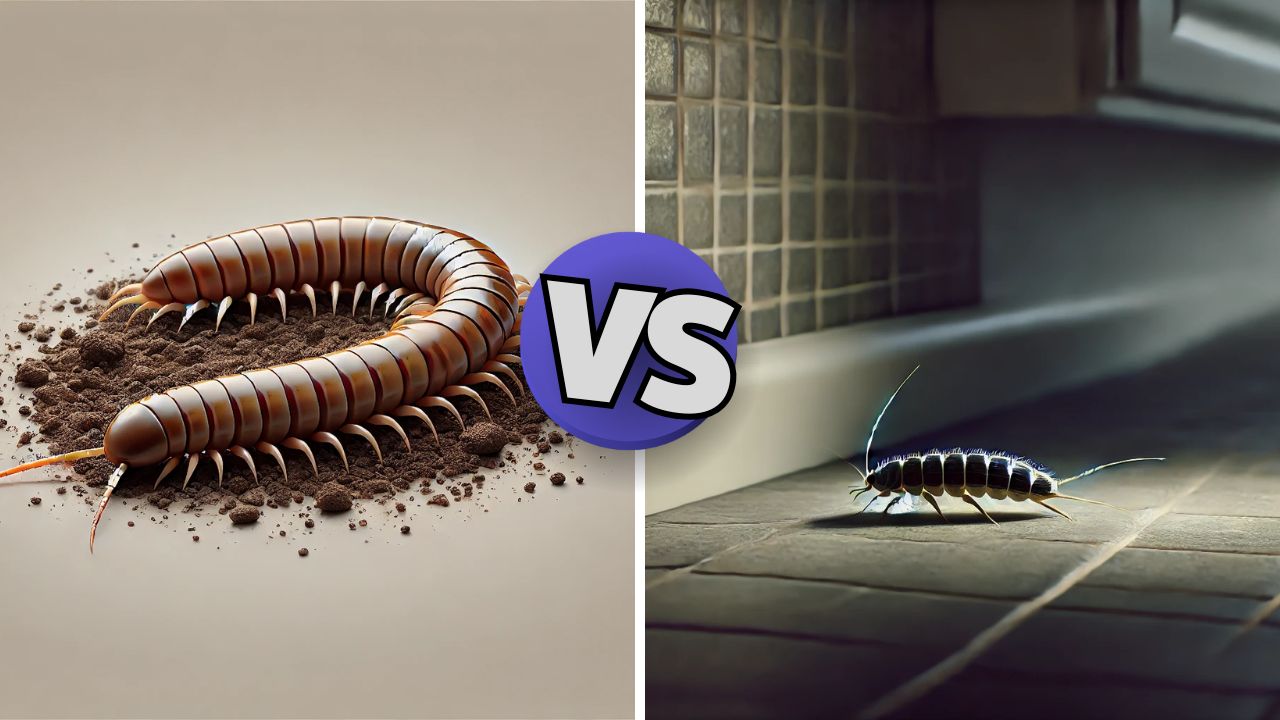 When it comes to household pests, centipedes and silverfish are two common insects that often cause confusion due to their similar habitats and appearance. Both prefer dark, damp environments like basements, bathrooms, and kitchens, but their behaviour, diet, and risks to humans differ significantly.
While centipedes are predators that help control other insects, silverfish are scavengers that can damage books, clothing, and food products. In this guide, we will learn how to identify, prevent, and manage both pests effectively.
Still unsure what pest you’re dealing with? Schedule your Free Pest Inspection today and let our specialists provide quick identification and solutions tailored to your home.
When it comes to household pests, centipedes and silverfish are two common insects that often cause confusion due to their similar habitats and appearance. Both prefer dark, damp environments like basements, bathrooms, and kitchens, but their behaviour, diet, and risks to humans differ significantly.
While centipedes are predators that help control other insects, silverfish are scavengers that can damage books, clothing, and food products. In this guide, we will learn how to identify, prevent, and manage both pests effectively.
Still unsure what pest you’re dealing with? Schedule your Free Pest Inspection today and let our specialists provide quick identification and solutions tailored to your home.
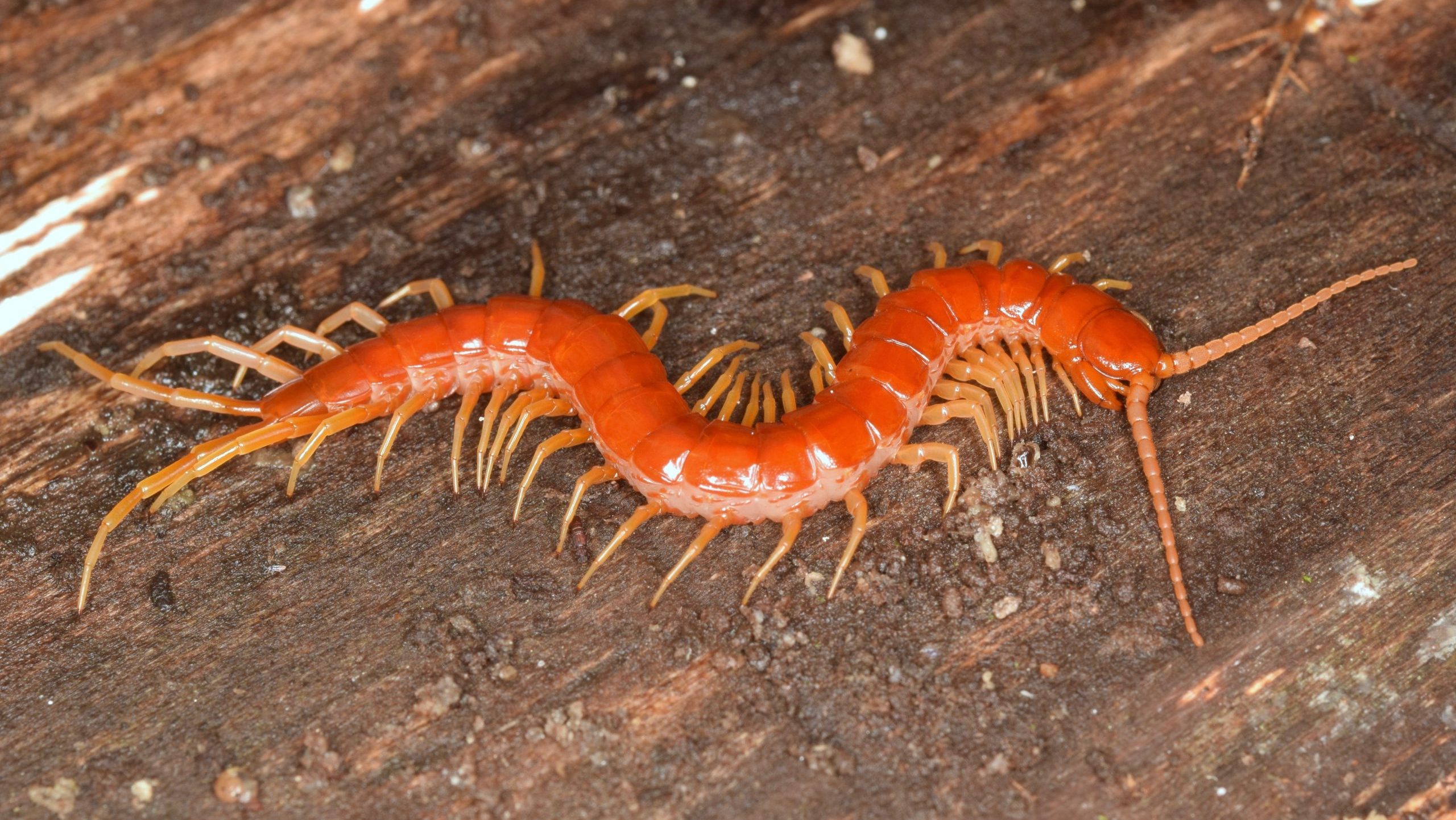

Not getting a solution?
Get your free pest control estimate today!What is a Centipede?
Centipedes are elongated, fast-moving arthropods known for their numerous legs and predatory nature. While their appearance may seem intimidating, they are actually beneficial insects as they prey on other household pests like cockroaches, spiders, and ants.Physical Characteristics of Centipedes
-
Size: Varies by species, ranging from 1 inch to 6 inches in length.
-
Body Structure: Long, segmented body with numerous legs (up to 177 pairs in some species).
-
Color: Typically brown or reddish-brown, with a slightly flattened body.
-
Legs: Long, spindly legs, allowing them to move quickly.
-
Venom: Equipped with venomous claws behind their head to immobilise prey (not harmful to humans).
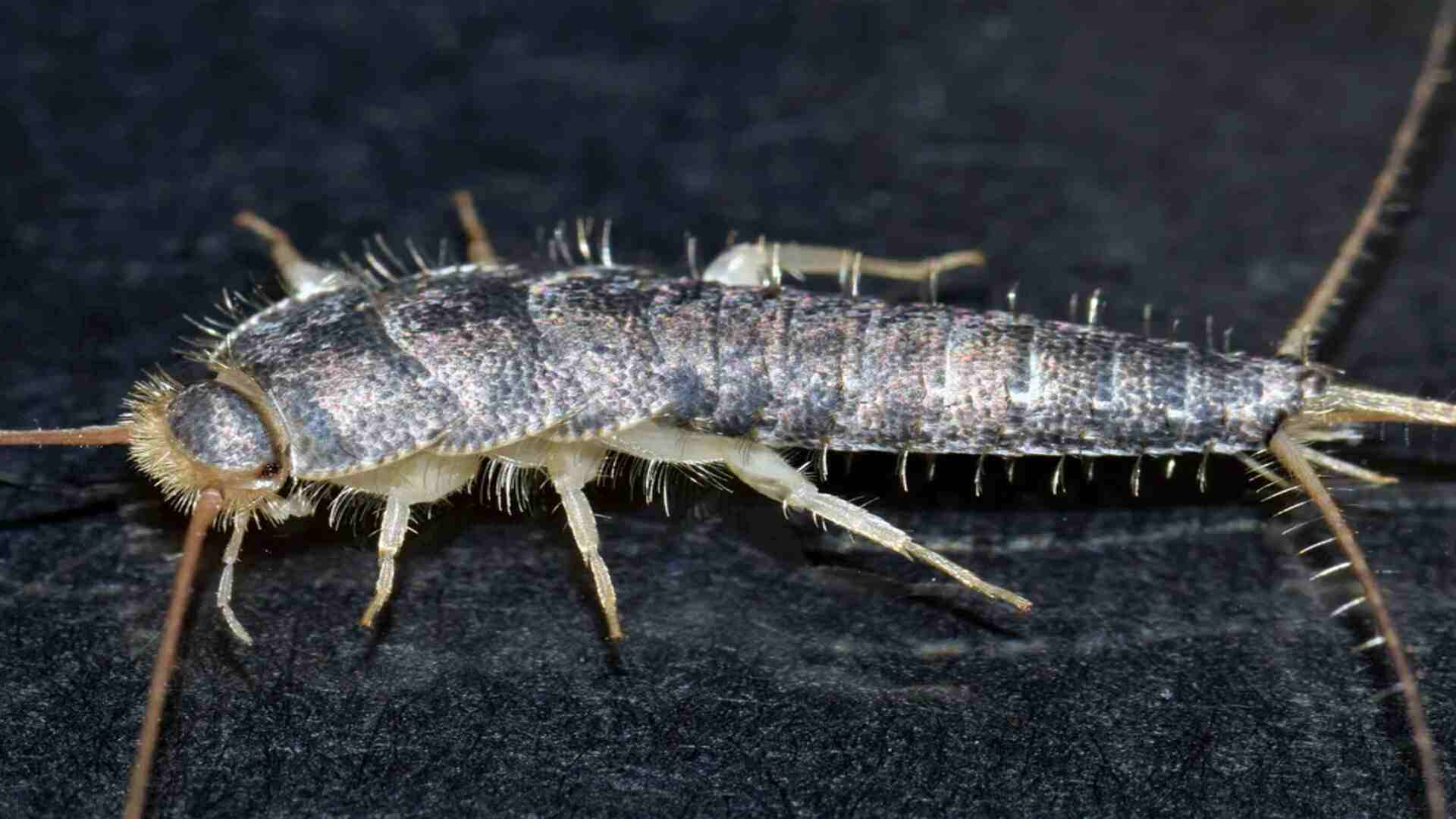
What is a Silverfish?
Silverfish are small, wingless insects that are known for their shimmering, fish-like movement. Unlike centipedes, silverfish are not predators, but they can be predators who want to kill silverfish. Then, scavengers that feed on starchy materials cause damage to paper, books, fabrics, and food products.Physical Characteristics of Silverfish
-
Size: Smaller than centipedes, measuring 1/2 inch to 1 inch in length.
-
Body Structure: Flattened, elongated body with three long, tail-like appendages at the rear.
-
Color: Silvery-gray, often covered in shiny scales, giving them a metallic appearance.
-
Legs: Six short legs, often mistaken for other small insects.
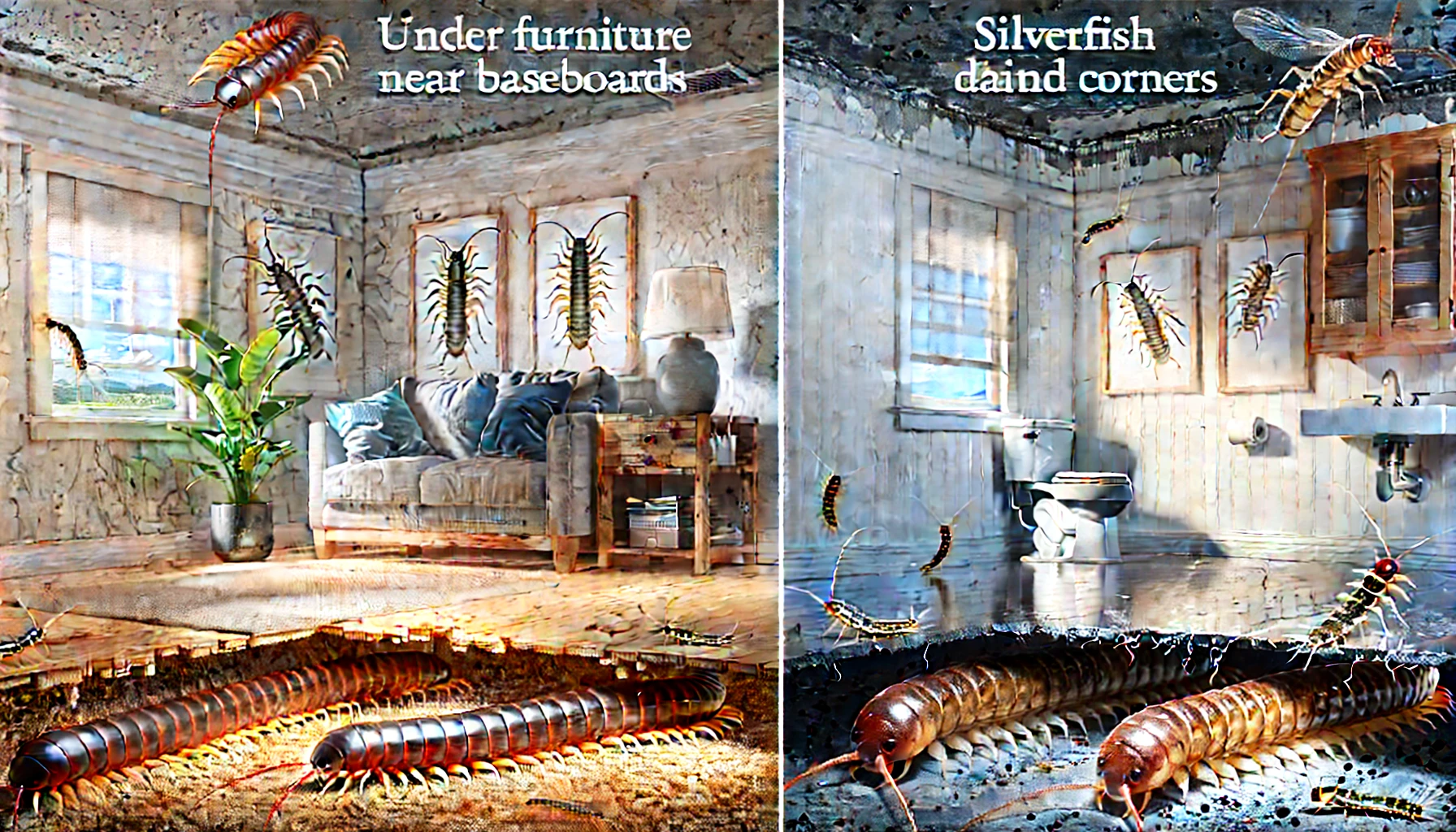
Habitats and Where They Thrive
- Knowing where centipedes and silverfish like to hang out can help you spot and control them more effectively. Let’s explore the preferred habitats of these common household pests.
-
Centipedes: Thrive in damp, dark places such as basements, bathrooms, and gardens. Commonly found under rocks, logs, leaf piles, and within soil where moisture is present.
-
Silverfish: Prefer warm, humid indoor environments like bathrooms, kitchens, attics, basements, and near plumbing fixtures where moisture and warmth are abundant.
Behavior and Feeding Habits
- Understanding the behavior and feeding habits of centipedes and silverfish can make a huge difference in managing these household pests. Here’s how these two creatures differ in their activities and dietary preferences.
-
Centipedes: Nocturnal predators that hunt insects, spiders, and small arthropods. Use venomous claws to capture and immobilize their prey.
-
Silverfish: Nocturnal scavengers that feed on starches and sugars, including paper, glue, fabric, and pantry items—often damaging stored goods.
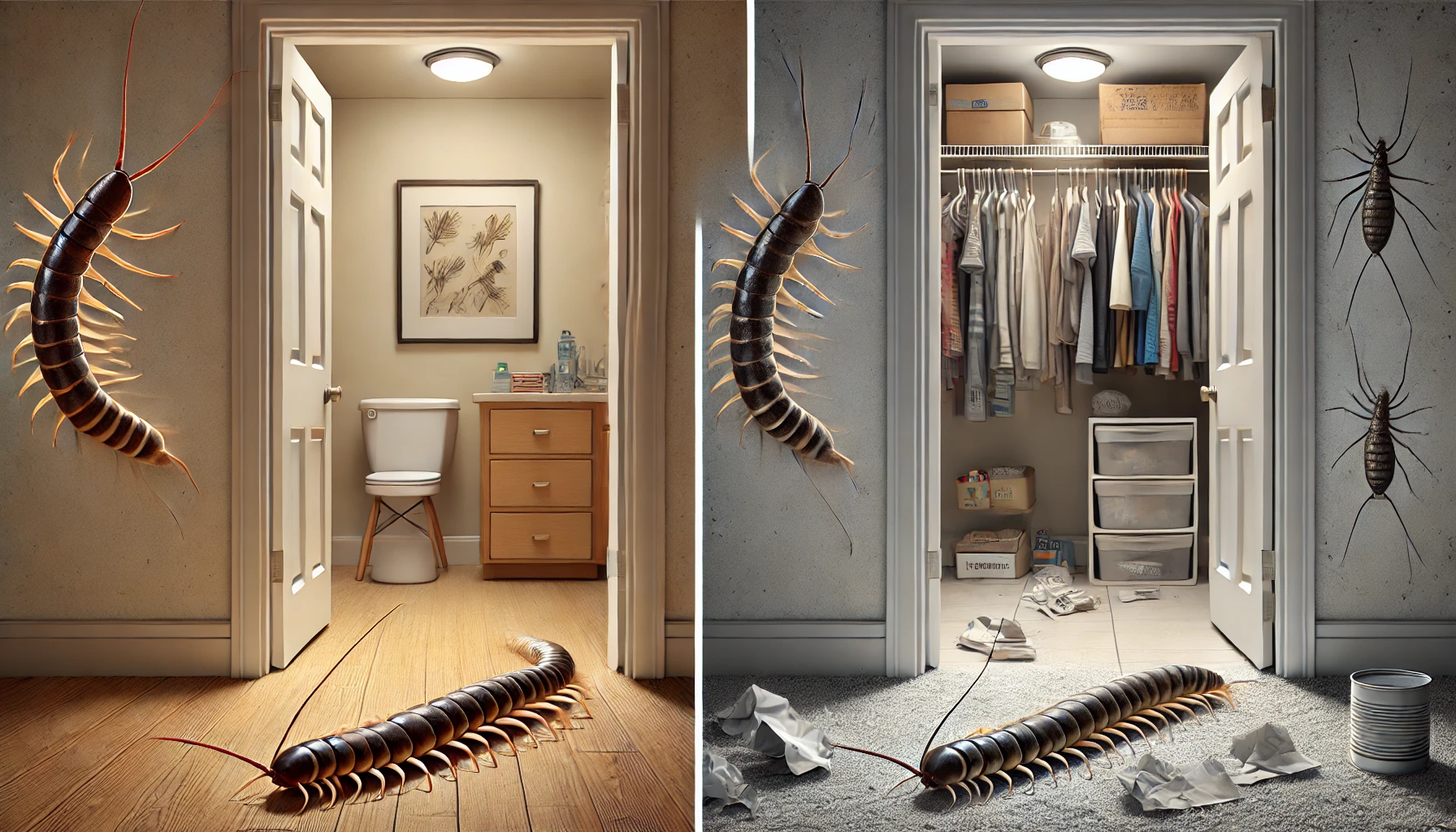
Are Centipedes Dangerous to Humans?
While centipedes have venomous claws used for capturing prey, most species are not significantly dangerous to humans. However, larger centipedes can deliver painful bites, causing redness, swelling, and discomfort, though serious reactions are rare. Are Silverfish Harmful or Just a Nuisance? Silverfish are generally considered a nuisance rather than harmful pests. They do not bite or spread diseases. However, their presence can result in damage to household items such as books, wallpapers, clothing, and foodstuffs, making them problematic from a property-damage standpoint.Key Differences Between Centipedes and Silverfish
| Feature | Centipedes | Silverfish |
|---|---|---|
| Size & Shape | Long, segmented body with numerous legs (1-6 inches) | Flat, elongated body with three long tail-like appendages (1/2 – 1 inch) |
| Color | Brown or reddish-brown | Silvery-gray with a metallic sheen |
| Legs | Many long legs (up to 177 pairs) | Six short legs |
| Movement | Fast-moving, runs quickly across surfaces | Slow-moving, wiggling fish-like motion |
| Diet | Carnivorous, preys on other insects | Feeds on starchy materials (paper, glue, fabric, food crumbs) |
| Habitat | Dark, moist areas like basements and bathrooms | Damp, humid areas like kitchens, attics, and bookshelves |
| Risk to Humans | Mild bite, but not dangerous; beneficial for pest control | No bite, but damages books, clothes, and food |
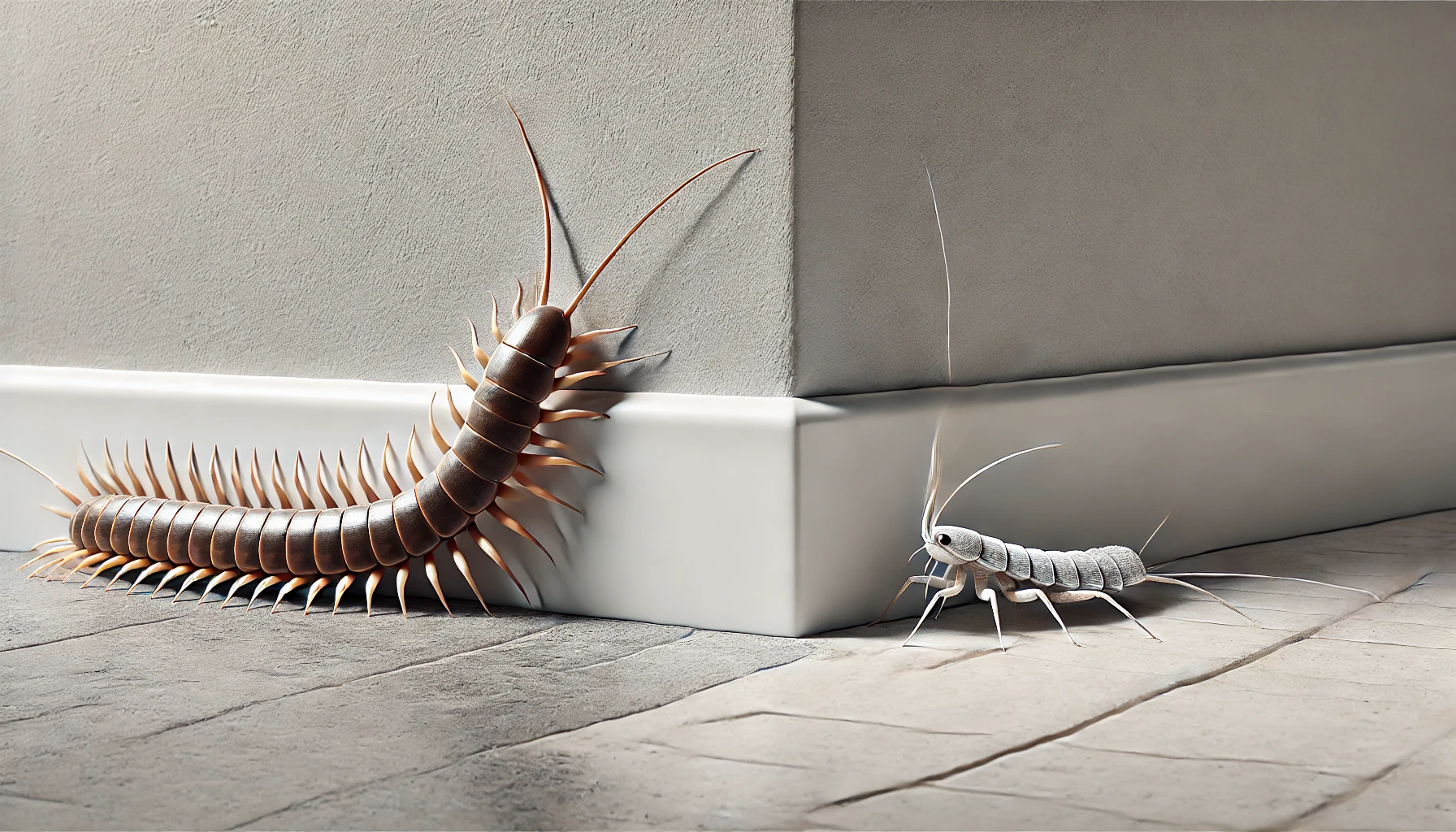
How to Identify Centipedes and Silverfish?
Proper identification is key to determining how to manage infestations effectively. If you see a long, fast-moving insect with numerous legs, you are likely dealing with a centipede. If you spot a small, shiny insect with three tail-like appendages, it is likely a silverfish.Identifying a Centipede
-
Legs: Look for numerous pairs of long, spindly legs.
-
Speed: Observe its speed—centipedes run quickly when disturbed.
-
Color: Check for reddish-brown or brown coloration.
-
Habitat: Found in damp areas, such as crawl spaces and under debris.
Identifying a Silverfish
-
Appearance: Look for a silvery-gray, metallic appearance.
-
Movement: Observe its slow, wiggling movement—it moves like a fish.
-
Body Features: Check for three long appendages at the rear of its body.
-
Habitat: Commonly found near bookshelves, stored papers, and humid areas.
Potential Risks and Concerns
Centipedes primarily present the risk of painful bites, especially from larger species, and can cause anxiety or distress to those uncomfortable around insects. Silverfish, while not directly harmful to humans, pose concerns related to their destructive feeding habits, resulting in damage to valuable items and stored goods within homes.Health Risks Associated with Centipedes
Centipede bites may result in localized pain, redness, and swelling. Although rare, individuals sensitive to centipede venom may experience allergic reactions requiring medical attention. Generally, centipede encounters pose minimal serious health risks.Property Damage and Issues Caused by Silverfish
Silverfish can significantly damage household items through their feeding behavior. They often chew through paper products, wallpaper, clothing, fabrics, books, and pantry items, leaving behind holes, stains, and general deterioration. Over time, this damage can accumulate, leading to considerable loss of personal belongings and requiring costly replacements or repairs.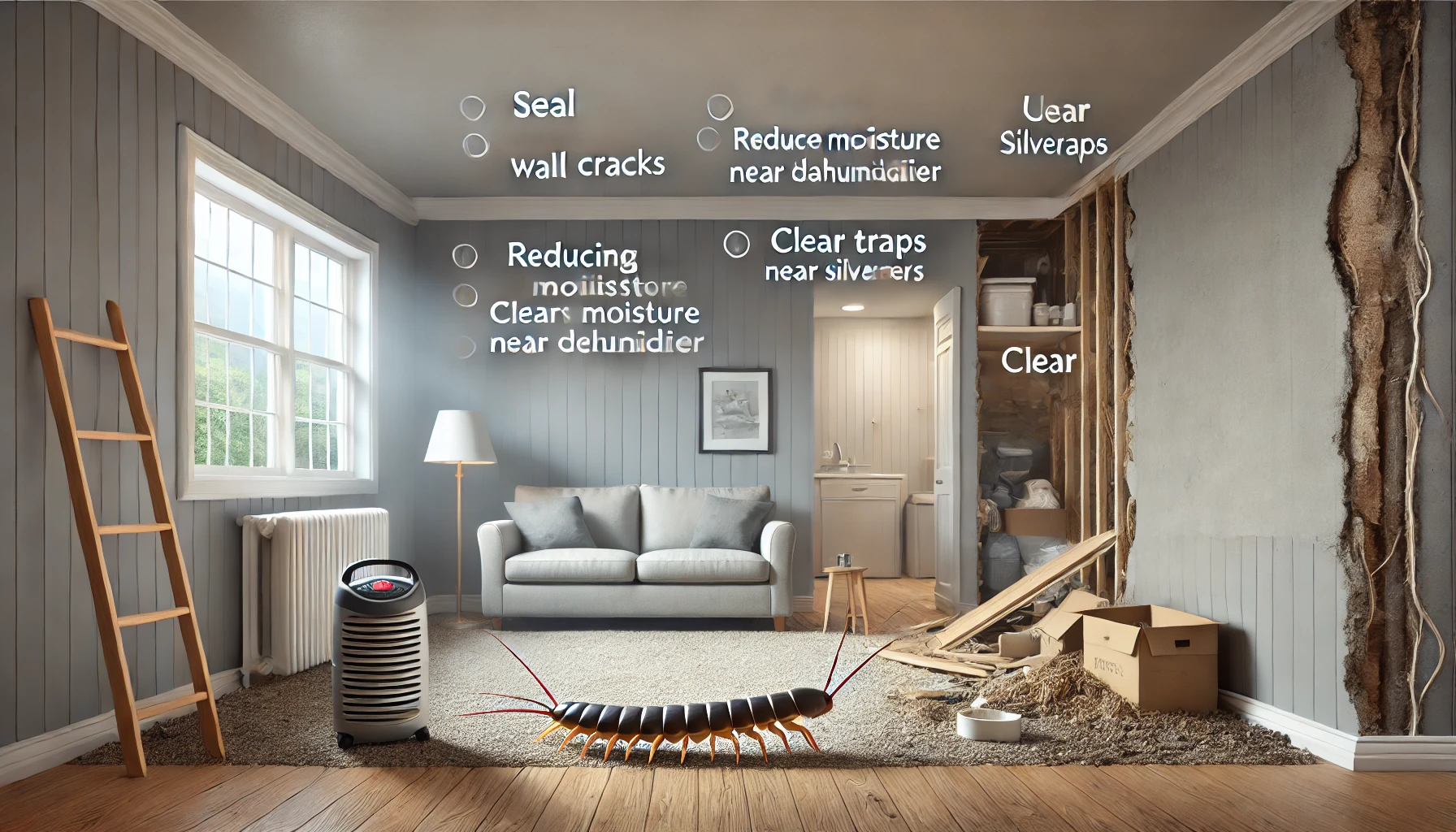
How to Prevent Centipedes and Silverfish?
Taking preventative measures can help reduce infestations and eliminate the conditions that attract these pests. Since centipedes thrive in moist environments, reducing moisture levels is the best deterrent. Silverfish are drawn to starch-based materials, so eliminating food sources is key and can infest your hair.Preventing Centipedes
-
Seal entry points around windows, doors, and foundation cracks.
-
Reduce moisture by using dehumidifiers and fixing leaks.
-
Eliminate food sources by controlling other household pests that centipedes feed on.
-
Declutter basements and crawl spaces to remove potential hiding spots.
Preventing Silverfish
-
Block cracks and gaps in walls, windows, and cabinets.
-
Control humidity with dehumidifiers and improve ventilation.
-
Store edibles properly in airtight containers and avoid leaving food crumbs.
-
Keep books, papers, and fabrics stored in dry conditions to prevent damage.
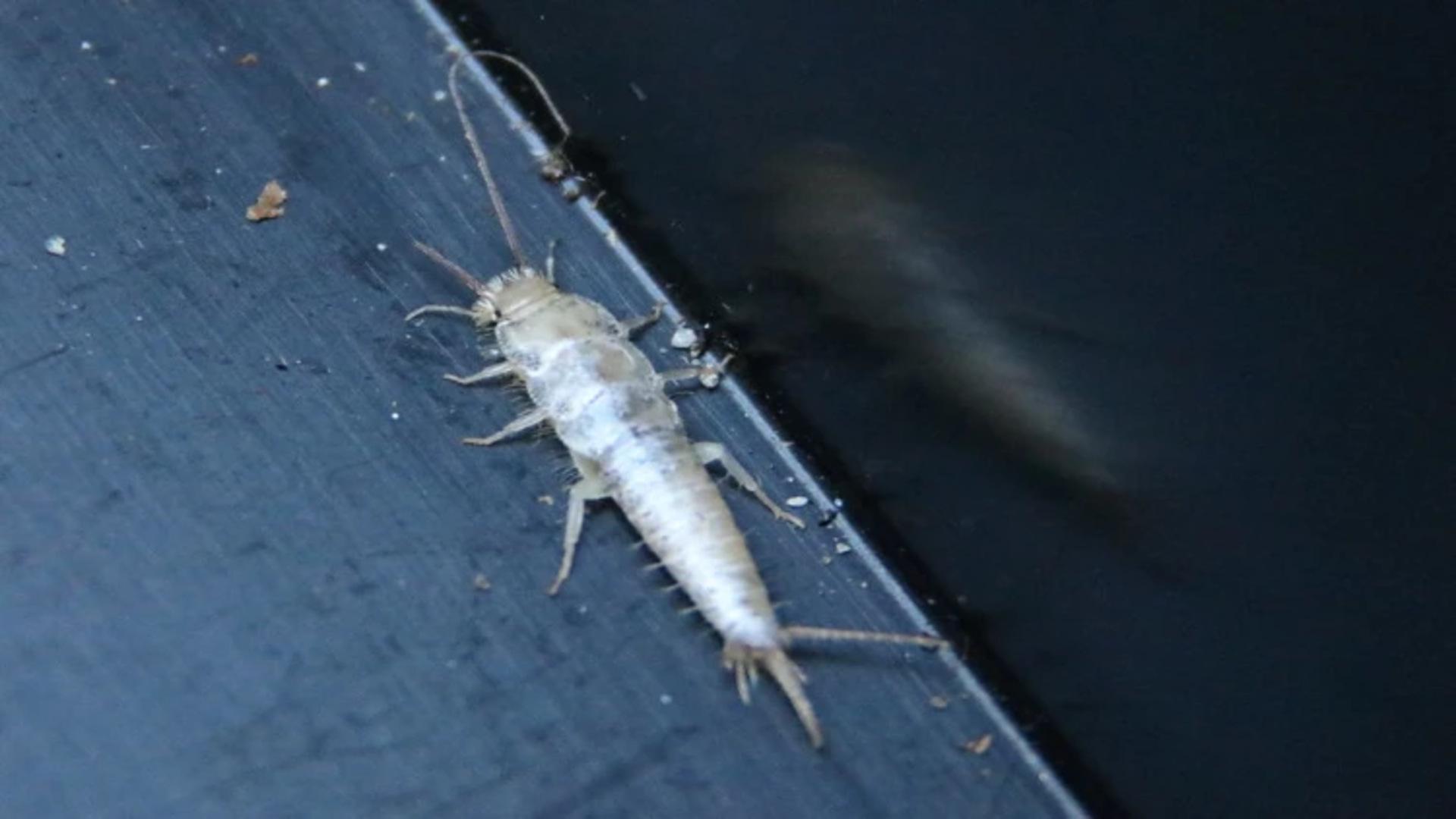
General Pest-Proofing Advice for Homes
To effectively pest-proof your home:- Reduce humidity levels by using dehumidifiers and improving ventilation.
- Seal cracks and crevices around doors, windows, pipes, and foundations.
- Regularly remove leaf litter, woodpiles, and debris near your home’s perimeter.
- Store food, paper products, and fabrics in airtight containers to discourage silverfish.
- Maintain cleanliness and promptly address plumbing leaks or moisture issues.
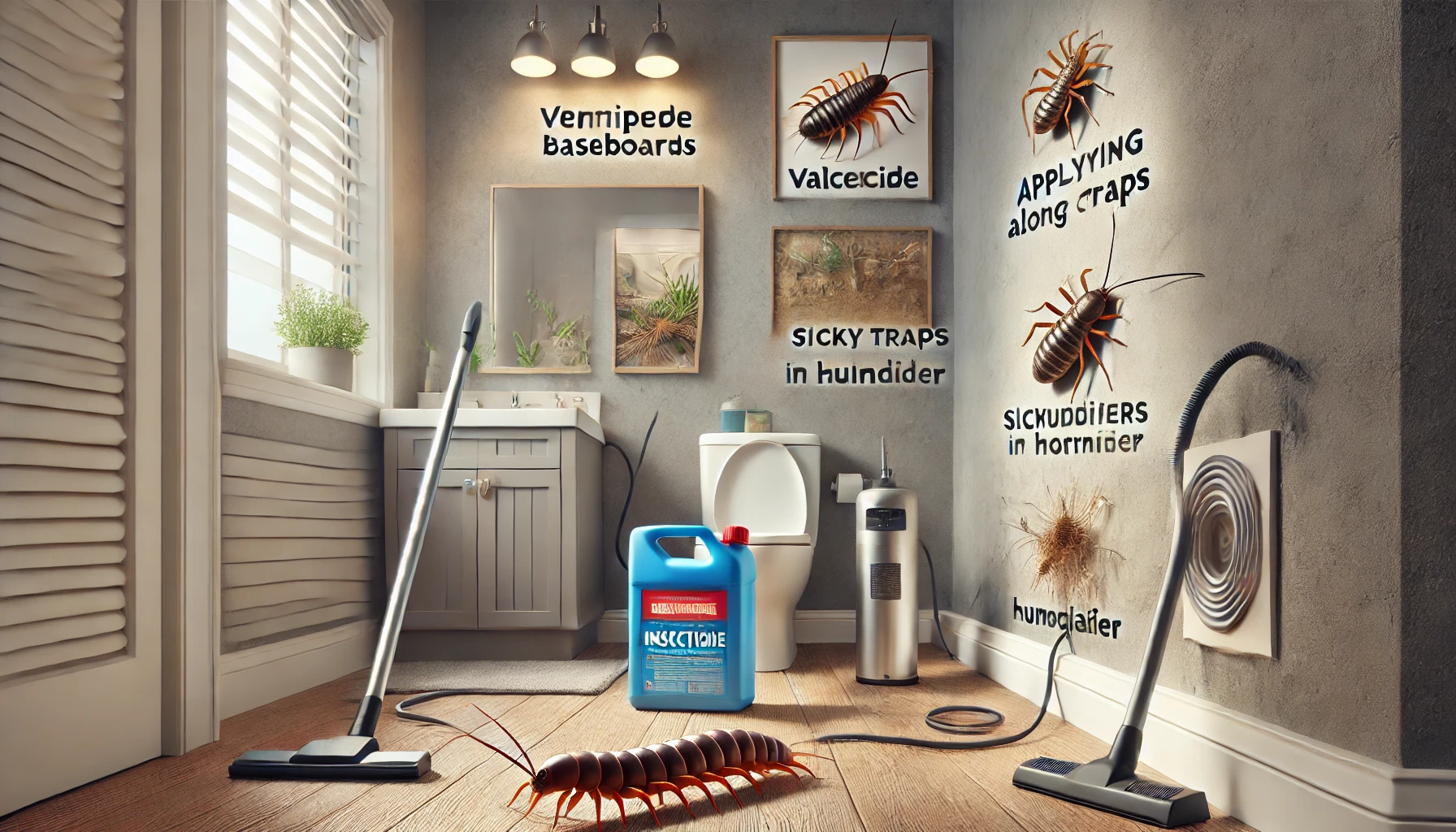
How to Treat a Centipede or Silverfish Infestation?
If you discover an infestation, taking the right approach can help eliminate these pests quickly. Centipedes are beneficial predators, but control measures may be needed if their numbers become excessive. Silverfish infestations can be persistent, especially in humid environments, but there are smells that treat them.Dealing with Centipedes
-
Vacuum regularly to remove centipedes and their eggs.
-
Use insecticides in areas where centipedes are commonly found (basements, attics, bathrooms).
-
Install barriers like weather stripping around doors and windows.
Dealing with Silverfish
-
Vacuum frequently to remove silverfish and food sources.
-
Apply boric acid or diatomaceous earth in cracks and crevices.
-
Apply sticky traps near bookshelves, attics, and damp areas.
-
Contact a professional exterminator for severe infestations.
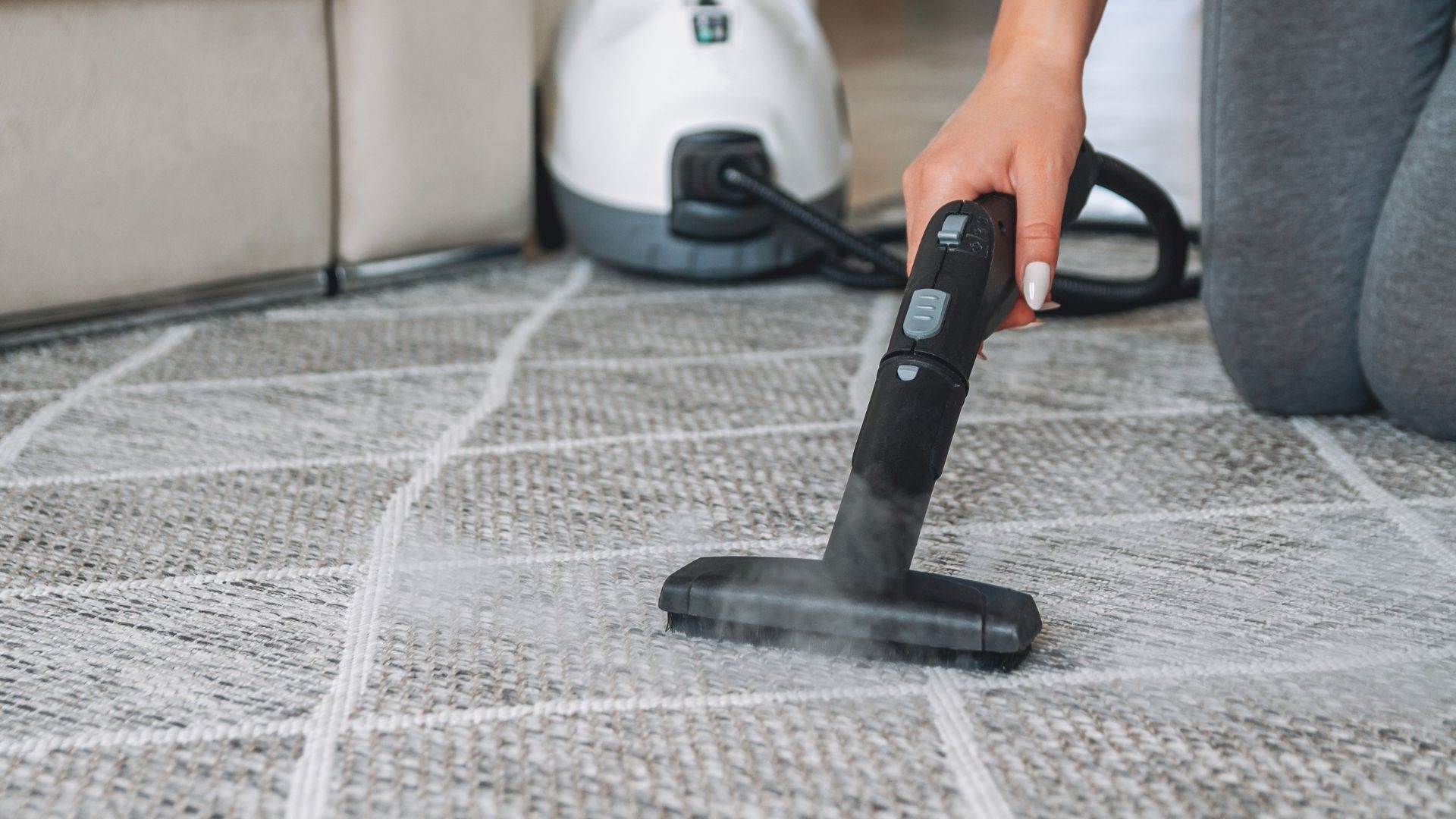
Myths and Facts About Silverfish and Centipedes
| Myth | Fact |
|---|---|
| Centipedes are insects. | Centipedes are arthropods, but not true insects. They belong to the class Chilopoda. |
| Silverfish can cause allergic reactions. | Silverfish are not known to cause allergic reactions. They are primarily a nuisance pest. |
| All centipedes are venomous and dangerous. | While centipedes have venom, their bites are generally not dangerous to humans. |
| Silverfish are a sign of poor hygiene. | Silverfish are attracted to dry, undisturbed areas, not necessarily poor hygiene. |
| Centipedes can be found in dry environments. | Centipedes prefer moist and dark environments. |





